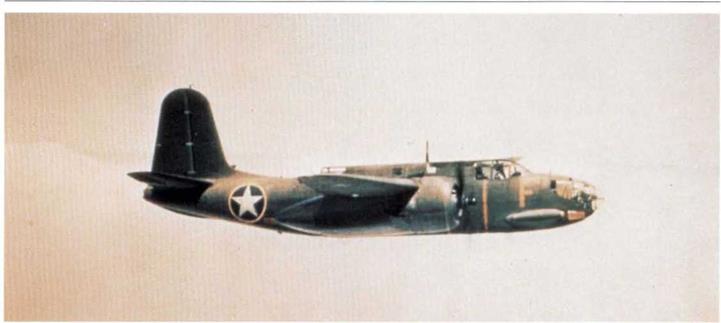T. O. 07-1-1A states that wood propellers not to be camouflaged, January 9,1943
The first change of 1943 came in the form of T. O. 07-1-1A, dated January 9, 1943, but it was only a minor one. It stated that, under “Camouflaging of Propeller”, that no attempt was to be made to camouflage wood propellers.
Spec, 98-24105-Q, Amendment No. 2 changes color for radio call numbers, January 13, 1943.
There had been some confusion as to how the radio call numbers were to be derived from the aircraft serial numbers. This was because the instructions had slated that the radio call number should start with the last number of the year the aircraft was manufactured, whereas the serial number began with the fiscal year in which the aircraft had been ordered. This led to some duplication of radio call numbers on different aircraft, primarily because the year of manufacture was not necessarily the same year as shown in the serial number. For example, a serial number assigned in 1941, such as 41-2345 and manufactured in 1942, would have a serial number of 41-2345 and a radio call number of 22345, which was incorrect and should have been 12345. Para. E-6A was changed to read as follows:

E-6A. Each airplane shall have a radio call number painted on its vertical tail surfaces. The radio call number shall consist of at least four numerals and shall be determined in the following manner: The first numeral and the hyphen shall be omitted from the serial number of the airplane, using zero where necessary between the year designated and the serial number to make at least four numerals.
|
Douglas A-20C, no radio call number visible, aircraft ‘F with the short-lived yellow outlined star insignia. Finished in RAF camouflage, it was a repossessed aircraft. (USAF) |
Renumbered Paragraph E-6D, “Camouflaged Airplanes”. – Delete the last sentence of this paragraph and substitute the following:
For light colored backgrounds, the numbers shall be black in accordance with color chip No. 44 of Army Air Forces Bulletin No. 41, and for dark backgrounds, the numbers shall be yellow in accordance with color chip No. 48 of Army Air Forces Bulletin No.41,
Many manufacturers had asked for clarification of the color requirements in Spec. 24105-0 for the radio call numbers on dark backgrounds, because although T. O.07-1-1 called out yellow for these, the spec had required either red or black. This new amendment corrected this to require the use of yellow only.











